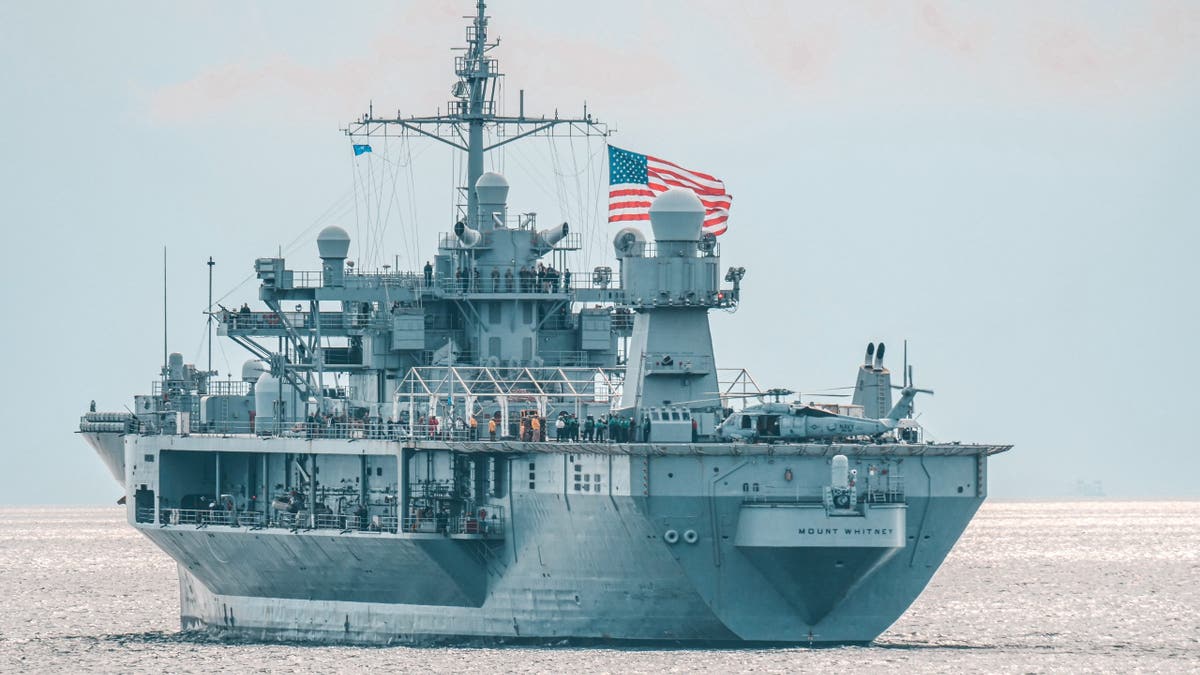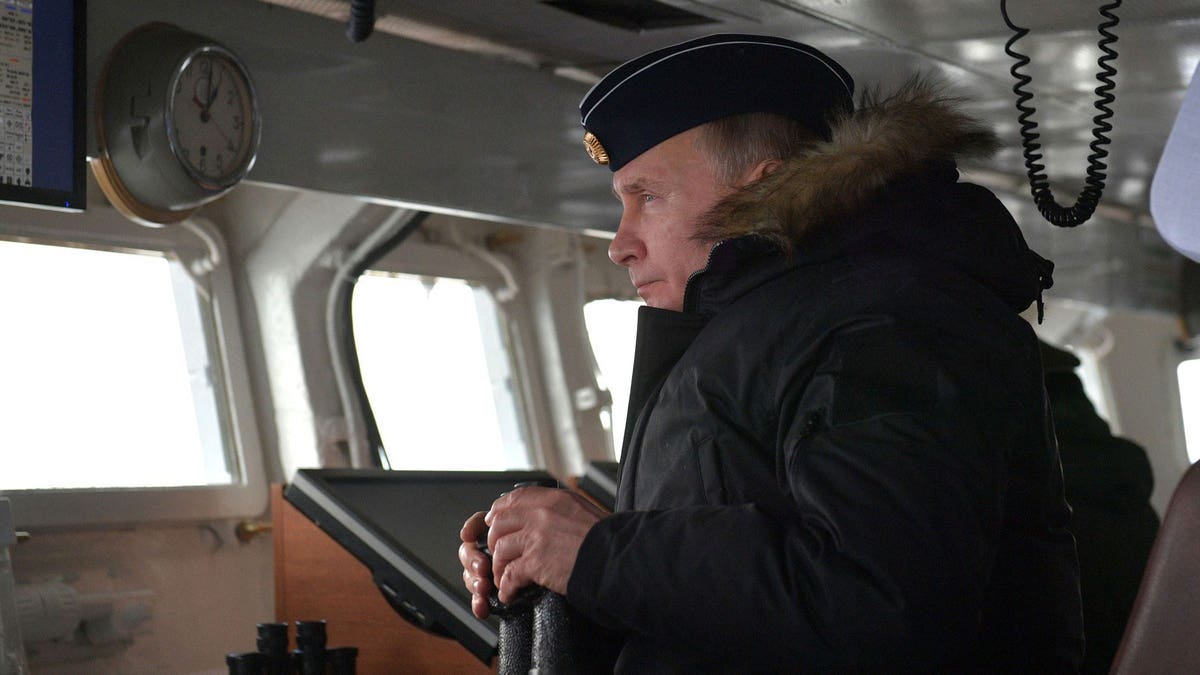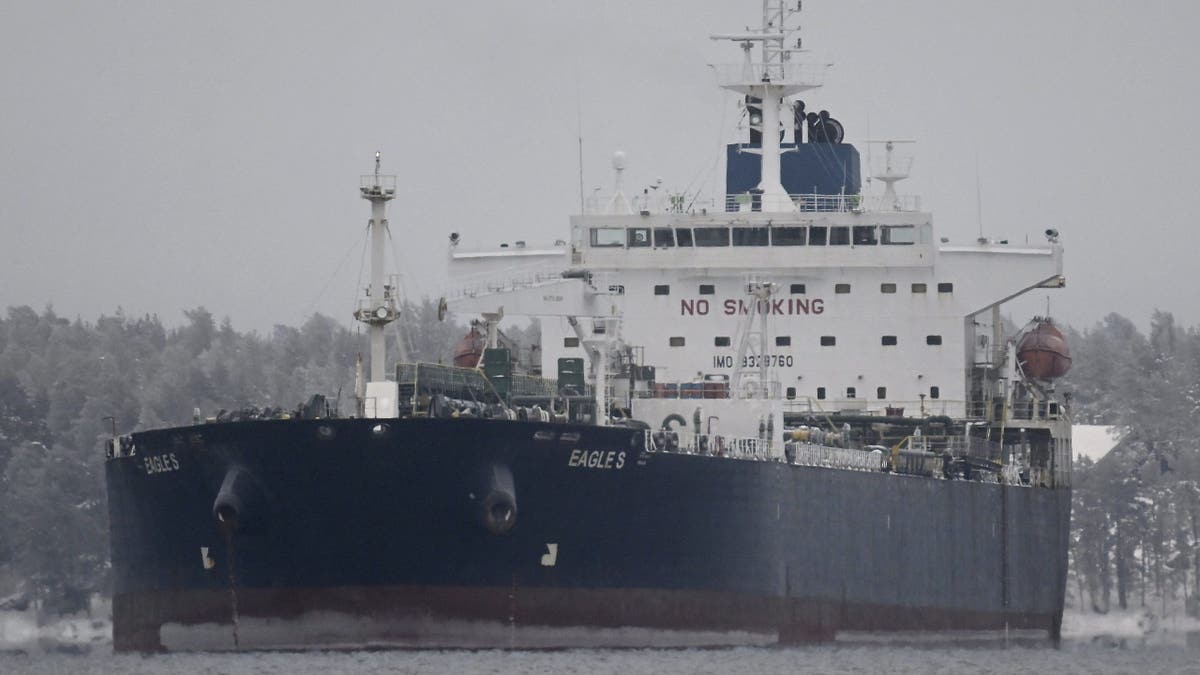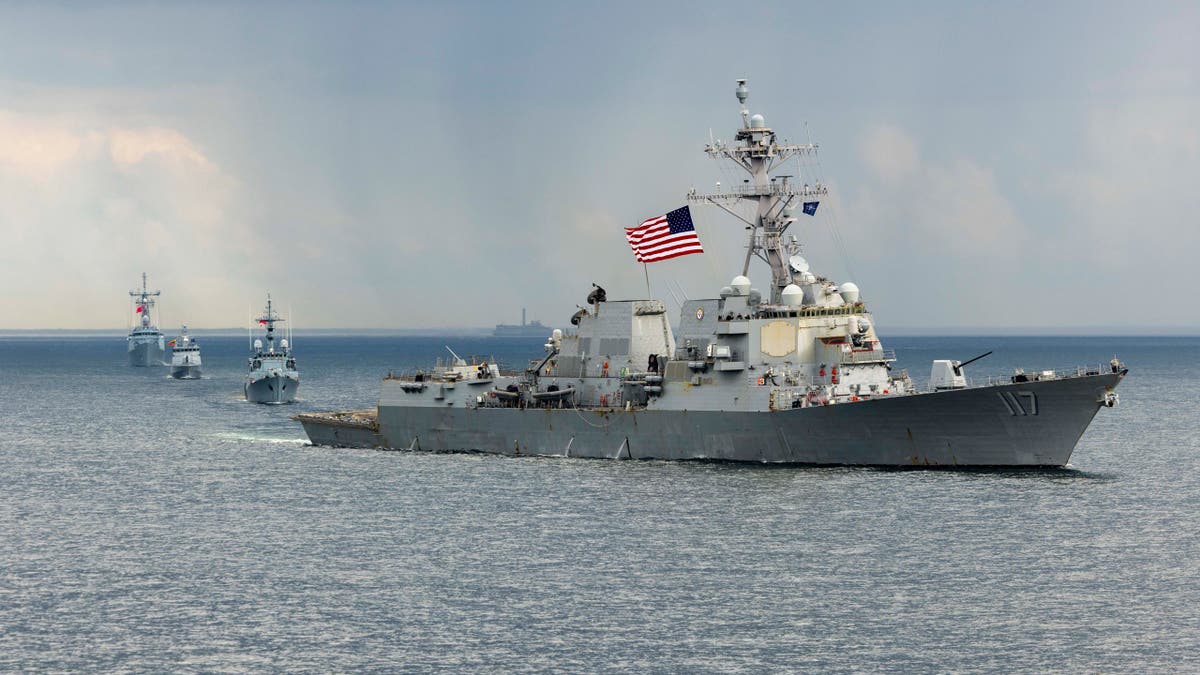
NEWYou can now listen to Fox News articles!
NATO navies are putting on a display of maritime might in the Baltic Sea this month, as thousands of personnel from 17 countries aboard 50 vessels take part in war games led by the U.S.’ 6th Fleet.
Of the nine countries that share a Baltic Sea coastline, only Russia is not a NATO member, and June’s BALTOPS exercise aims to ensure those other countries can work together to defend the area, at a time when Moscow is turning up the heat.
« This year’s BALTOPS is more than just an exercise, » said U.S. Vice Admiral J.T. Anderson in a press release this week. « It’s a visible demonstration of our Alliance’s resolve, adaptability and maritime strength. »
Over the last year there’s been growing disquiet about Russia’s malign influence in the Baltic Sea region, with several incidents of severed undersea cables. Suspicion has fallen on Russia’s fleet of so-called « ghost » or « shadow » ships: hundreds of aging vessels, mostly oil tankers flying under foreign flags that are used to circumvent Western sanctions or trade in military hardware.
ESTONIAN SPY CHIEF DISCUSSES COUNTERING THREATS FROM RUSSIA

The USS Mount Whitney participates in exercise Baltic Operations as ships sail in formation through the Baltic Sea, June 5, 2025. (U.S. Navy Courtesy Photo)
There are also well-founded concerns that some of these ships are used for covert intelligence gathering, communication intercepts or to sabotage undersea infrastructure like internet cables or gas and electricity pipelines. Three crew members from a Cook Islands-registered vessel, believed to be part of Russia’s ghost fleet, are currently facing charges in Finland over damage to an undersea cable that prosecutors say happened when the ship dragged its anchor for 60 miles along the floor of the Baltic Sea.
« There’s a growing importance of the shadow fleet to Russia’s wartime economy, and a growing awareness that NATO needs to stop it, » Tony Lawrence, a naval expert and researcher at the International Centre for Defence and Security in Estonia, told Fox News Digital.
But after a number of NATO navies adopted a tougher stance against the ghost ships through stop-and-search tactics, the Russians announced they would use their own navy to escort the fleet through the Baltic Sea.
« The Russian military presence in the region has always been visible, this is not a new feature. However, what is new is that Russia is protecting its shadow fleet tankers in the narrow pass of the Gulf of Finland, » Finnish Defense Minister Antti Häkkänen said in a recent television interview with Finland’s YLE TV.

Russian President Vladimir Putin watches a naval exercise from the Marshal Ustinov missile cruiser in the Black Sea on Jan. 9, 2020. (Alexei Druzhinin/Russian Presidential Press and Information Office/Handout/Anadolu Agency via Getty Images)
NATO governments are keeping a close eye on the latest Baltic Sea developments and preparing for any possible increase in tensions. Danish Prime Minister Mette Frederiksen spoke at a meeting of NATO’s Nordic and Baltic members this week, and described the Russian threat as real and serious. « We see a more aggressive Russian approach in the Baltic Sea region, » she told reporters.
The Baltic Sea has relatively narrow waterways, where international maritime boundaries extend 12 miles from the coast, and Exclusive Economic Zones (EEZs) incorporate valuable fishing grounds or offshore wind farms. Add to this some of the busiest ferry routes in the world, commercial shipping traffic, military warships and civilian craft, and it raises the possibility that a more robust Russian naval posture in the area could increase the possibility of conflict.
« This is the risk of having more warships floating around the Baltic Sea, there is a potential for miscalculations that could escalate, and risk-reduction mechanisms that used to exist don’t work any more because the [NATO and Russian] navies aren’t talking to each other anymore, » Lawrence told Fox News Digital.
BALTIC SEA NATIONS VOICE CONCERN AS RUSSIA CONSIDERS REVISING MARITIME BORDER

The oil tanker Eagle S is seen anchored near the Kilpilahti port in Porvoo, on the Gulf of Finland on Jan. 13, 2025. (Vesa Moilanen/Lehtikuva/AFP via Getty Images)
Does the Russian navy even have the capacity to escort every single ghost fleet ship in the Baltic? That seems unlikely, according to some.
« It’s an escalation, of course, of Russian misbehavior in the Baltic Sea. But in practical terms I’m not sure it’s going to make that much difference, » Lawrence said.
« Russia’s Baltic Sea fleet has always been the junior cousin of the Russian navy, and it’s never been particularly well-equipped or enlarged, but it’s still the biggest national navy operating in the Baltic, and they have ships that are attuned to the Baltic Sea, which is shallow, and its salinity is such that you need special kinds of sensors. And they know how to hide ships in the archipelagos of Sweden or Finland, so in that regard, they have a certain amount of specialist capability, » Lawrence explained.
The Baltic Sea war games this month – with the U.S. Navy’s Arleigh Burke-class guided missile destroyer USS Paul Ignatius and the Blue Ridge-class command and control ship USS Mount Whitney taking part – serve to remind the Russians of the power of NATO’s combined naval assets in the region.

The guided missile destroyer USS Paul Ignatius participates in a steam formation with NATO ships during exercise Baltic Operations, June 5, 2025. (U.S. Marine Corps photo by Lance Cpl. John Allen)
And some of the smaller navies will be reassured by the presence of the American warships.
A few weeks ago, Estonia’s navy brought one suspected shadow fleet ship into its territorial waters for an inspection, and it complied. But when the Estonians tried the same tactic for a second time, the ship refused to stop and wouldn’t come into port.
CLICK HERE TO GET THE FOX NEWS APP
« That makes things more difficult for other nations because the shadow fleet is learning that it can just ignore what NATO navies do and there’s little that NATO can do in that situation, especially if there are Russian ships escorting the shadow fleet, » said Lawrence.
« But I don’t think NATO nations are going to back down. They will still follow and challenge these shadow fleet ships, or even look at other legislation, like requiring proof of insurance, to stop them from transiting the Baltic Sea. »
